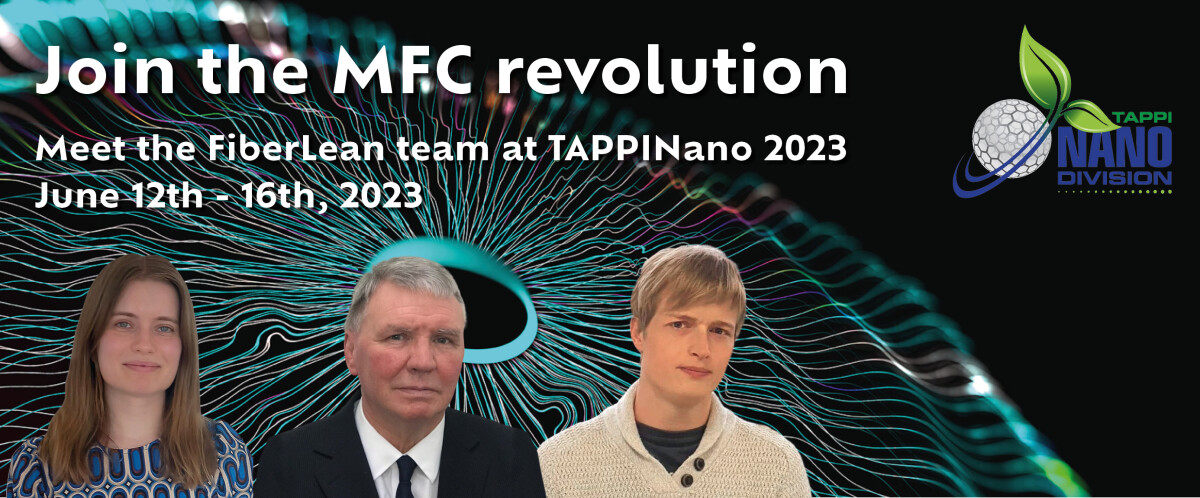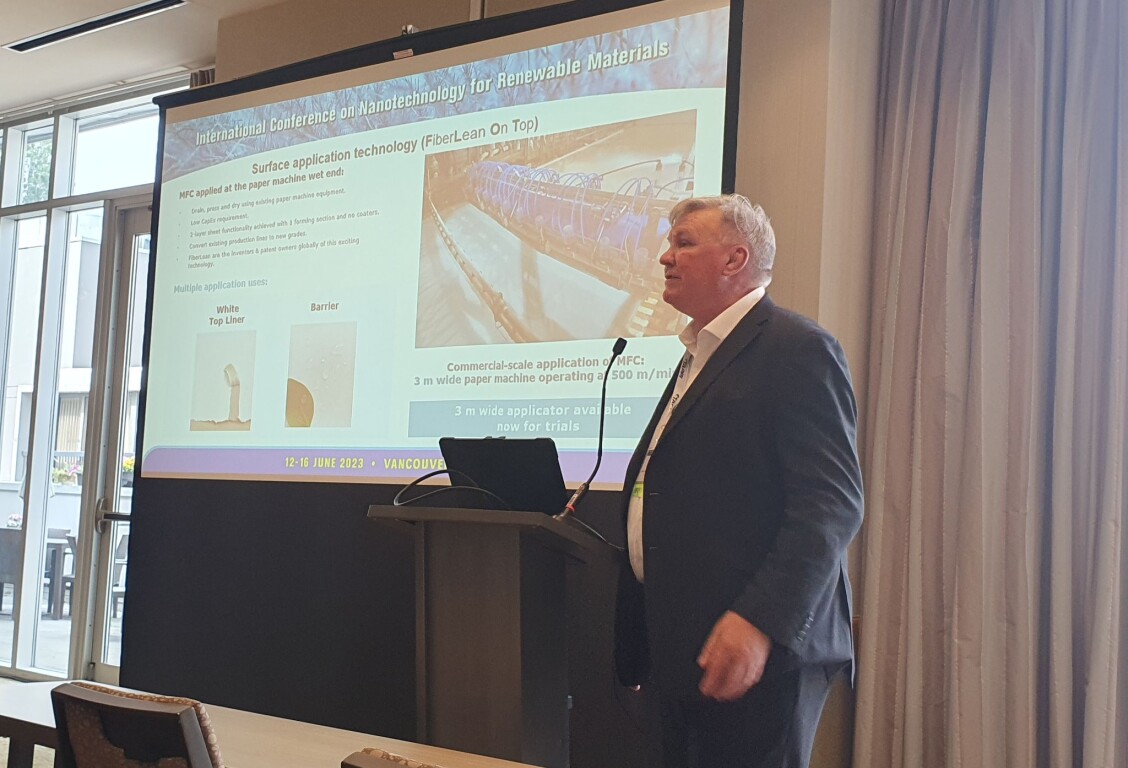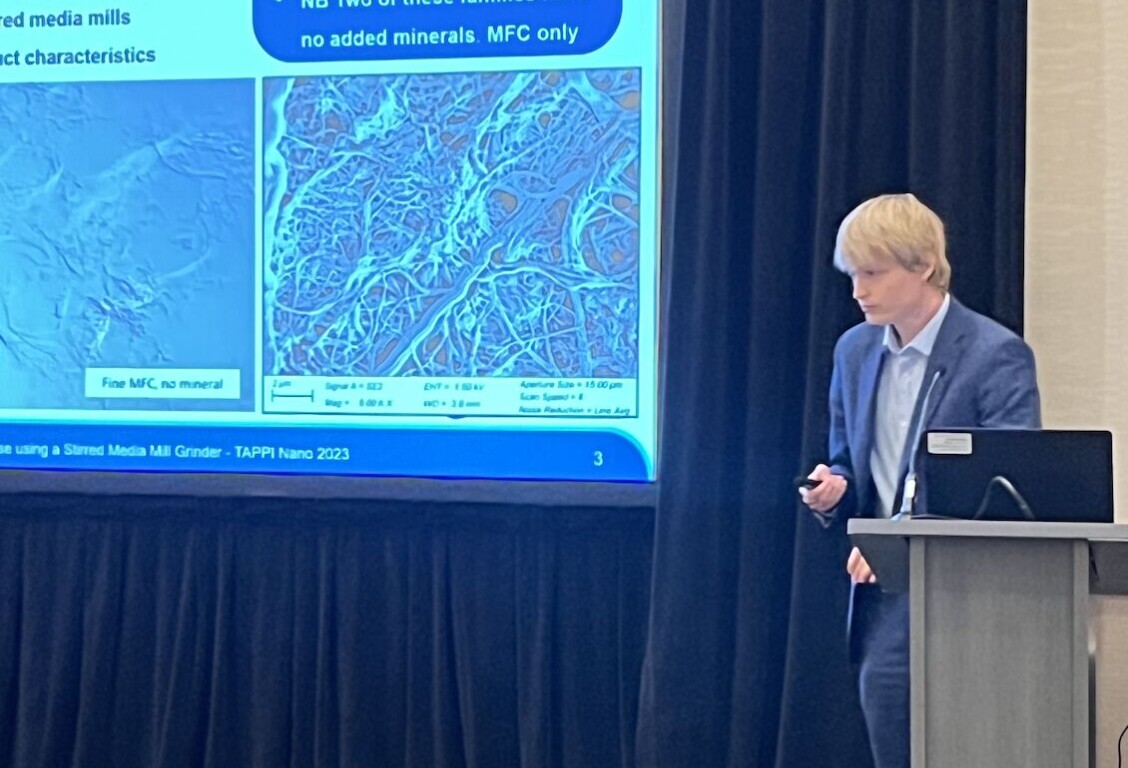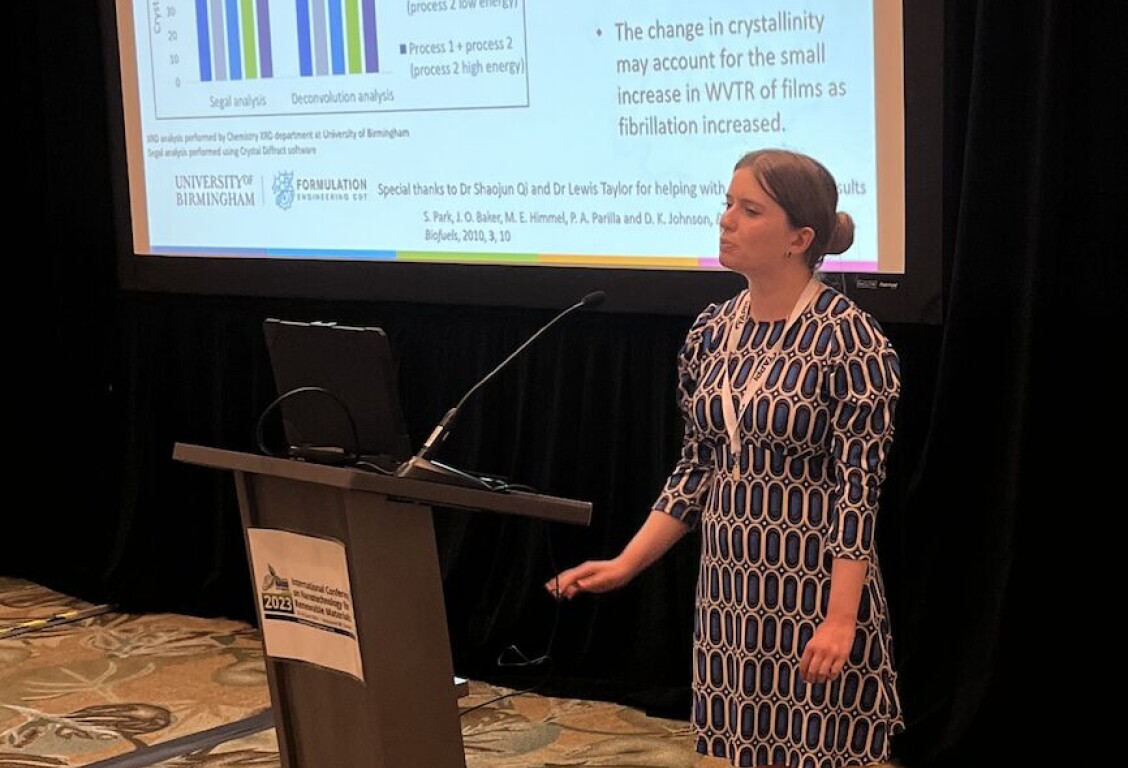Our Team at Nano
Tappi Nano - Vancouver June 12th - 16th, 2023
The FiberLean Process – Producing Microfibrillated Cellulose using a Stirred Media Mill Grinder
Lewis Taylor, David Skuse
Presented by Lewis Taylor.
Stirred media mills show considerable benefits compared to alternative technologies for MFC production. They are easy to operate in a continuous production mode, with high throughputs compared to the footprint and low capital cost of the equipment; furthermore, stirred mills are reliable and have high plant availability, as they do not rely on precision-engineered components for fibrillation which can be expensive to replace, nor do they use narrow orifices that are easy to block.
Over a decade ago, we began to adapt this technology to break and fibrillate fibres to produce MFC, and since then we have been optimising the process. There are many process parameters which influence the fibrillation efficiency and the properties of the MFC, and over the years, we have optimised the grinding process based upon the properties of the feed fibres and thus enabled us to efficiently tailor the morphological properties of the MFC based upon the application requirements.
Our presentation describes these developments and focuses on (i) the optimisation of MFC produced from both strong and weak virgin fibres and from recycled fibres and (ii) the optimisation of MFC for a variety of paper and board applications.
Influence of Fibril Morphology on the Barrier Properties of Microfibrillated Cellulose Coatings and Films
Presented by Robyn Hill.
Microfibrillated cellulose (MFC) coatings on paper or cardboard can give barrier properties to oxygen, grease, and mineral oil vapour- providing a more sustainable solution to food packaging than many plastics. MFC can form barrier layers because the high surface area, flexibility and aspect ratio of fibrils permits the formation of low porosity entangled networks held by hydrogen bonding.1-3 Increasing the degree of separation of cellulose fibrils from the main fibre reduces the size of fibrils within the MFC suspension which can decrease the rate of gas transport through an MFC film. 4 Different production methods are likely to have different effects on the relationship between fibrillation of the cellulose and barrier properties. The present research investigates how laboratory pulp refining or the Fiberlean Technologies MFC process affect the grease, water vapour and heptane vapour barrier properties of MFC films or coatings.
Results showed that the heptane vapour transmission rate for paper coated with 10 g m-2 of highly refined pulp was 2146 g m-2 day-1, for an MFC sample produced under normal conditions it was 121 g m -2 day-1 and for an optimized MFC sample, it was 25 g m-2 day-1. This difference appeared to be due to a difference in fibril morphology and suggests that process parameters can be selected to produce MFC with optimum barrier properties. 4
- J. W. Wang, D. J. Gardner, N. M. Stark, D. W. Bousfield, M. Tajvidi and Z. Y. Cai, ACS Sustainable Chem. Eng. 2018, 6, 49-70.
- N. Lavoine, I. Desloges, A. Dufresne and J. Bras, Carbohydr. Polym. 2012, 90, 735-764.
- V. Kumar, A. Elfving, H. Koivula, D. Bousfield and M. Toivakka, Ind. Eng. Chem. Res. 2016, 55, 3603-3613.
- J. Padberg, W. Bauer and T. Gliese, Nord. Pulp Pap. Res. J. 2016, 31, 548-560.
Request for more information
To make an enquiry please complete the form below.




